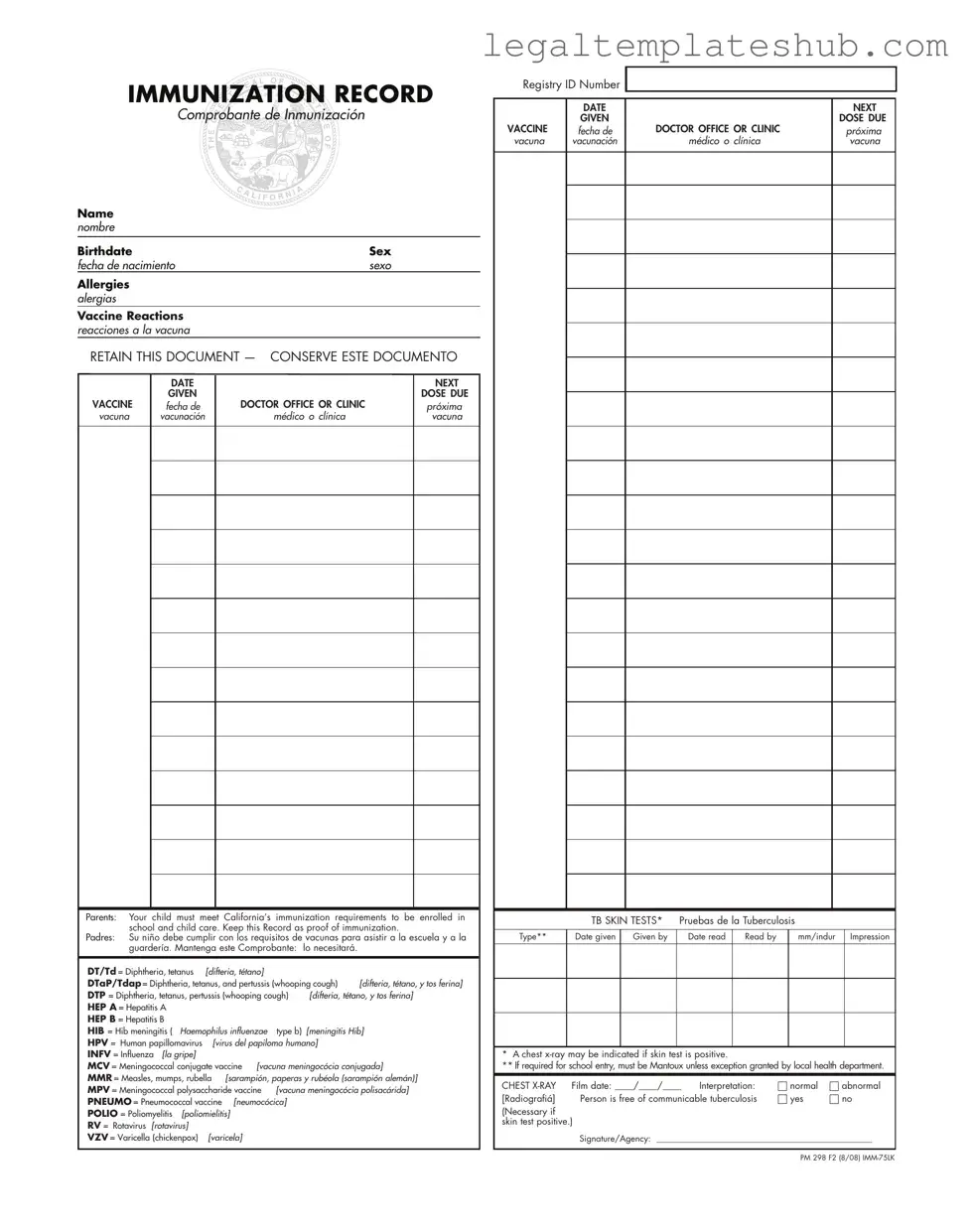Instructions on Filling in Immunization Record
Completing the Immunization Record form is an important step in ensuring your child meets the necessary health requirements for school and childcare enrollment. This form serves as a vital document that tracks vaccinations and any potential reactions. Here’s how to fill it out correctly.
- Start with the child's information: Fill in the child's name and birthdate. Make sure to include the correct sex as well.
- List any allergies: If your child has any allergies, write them in the designated space.
- Document vaccine reactions: If your child has had any reactions to vaccines in the past, note those down.
- Fill in the vaccine details: For each vaccine your child has received, write the date it was given, the next due date, and the name of the vaccine.
- Include the doctor's information: Write down the name of the doctor or clinic where the vaccinations were administered.
- Complete the TB skin tests section: If applicable, provide details about the type of test, date given, who administered it, date read, and the results.
- Chest x-ray information: If your child had a chest x-ray, fill in the film date and interpretation.
- Sign the form: Finally, make sure to sign the document and include the agency name if applicable.
Once you have completed the form, keep it in a safe place. You may need to present it when enrolling your child in school or childcare. Having this record handy will ensure that you meet all necessary immunization requirements without any hassle.
